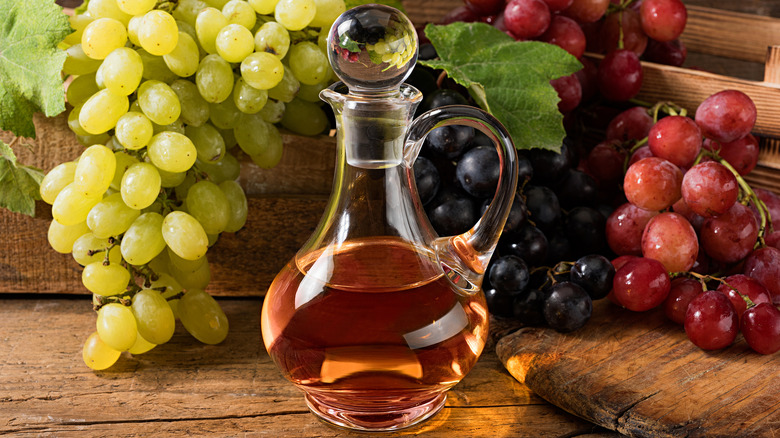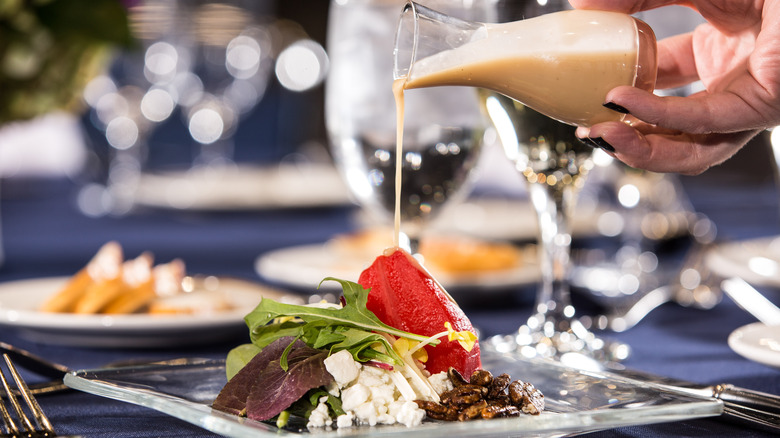Sherry Vinegar Should Be The Star Of Your Next Salad Dressing
Vinegar is a pantry staple with many uses in the kitchen, from adding a touch of acidity to your recipes to an inexpensive, eco-friendly cleaning agent. There are many types of vinegar with different degrees of acidity, distinct flavors, and specific applications, but one kind of vinegar that is often overlooked for the more popular red wine and balsamic vinegar deserves your attention. Next time you make a vinaigrette or salad dressing, look for the unique flavor of sherry vinegar. It's a milder vinegar with a slightly sweet, nutty flavor and medium body that adds complexity without overpowering your recipes.
While sherry vinegar has its own delicious flavor profiles depending on the style (more on that later), it will add a spin to any salad dressing recipe that calls for vinegar, whether it's red wine, white wine, apple cider, or rice vinegar. Recipes that call for apple cider vinegar are especially tasty when you substitute for sherry vinegar.
What is sherry vinegar and how to use it in recipes
Sherry vinegar is made, as the name implies, from sherry, a fortified wine from the Andalucía region in Southern Spain. To make the vinegar, however, the wine is not fortified but allowed to ferment. Sherry, or Jerez in Spanish, is protected by a Denomination of Origin and so is the vinegar produced from the wine. It's made from three types of grapes: Palomino, Pedro Ximenez, and Moscatel, each with its own flavor profile. Palomino is the most common, used for making Fino sherry and producing a lighter, all-purpose vinegar, while Pedro Ximenez and Moscatel are sweeter grapes that produce more complex, richer vinegar. All are fermented and aged in oak barrels for at least six months, and often more, to develop their flavors.
Use Fino sherry as you would rice or white wine vinegar in your next vinaigrette, and try a fruity vinegar made from Moscatel sherry in place of apple cider vinegar. Pedro Ximenez has richer flavors similar to balsamic vinegar since the grapes are dried in the sun to concentrate their sugars, yielding flavors of spice, leather, or fig. Use it as you would balsamic in salad dressings, to glaze meats for the grill, or drizzle over fruit such as strawberries.

